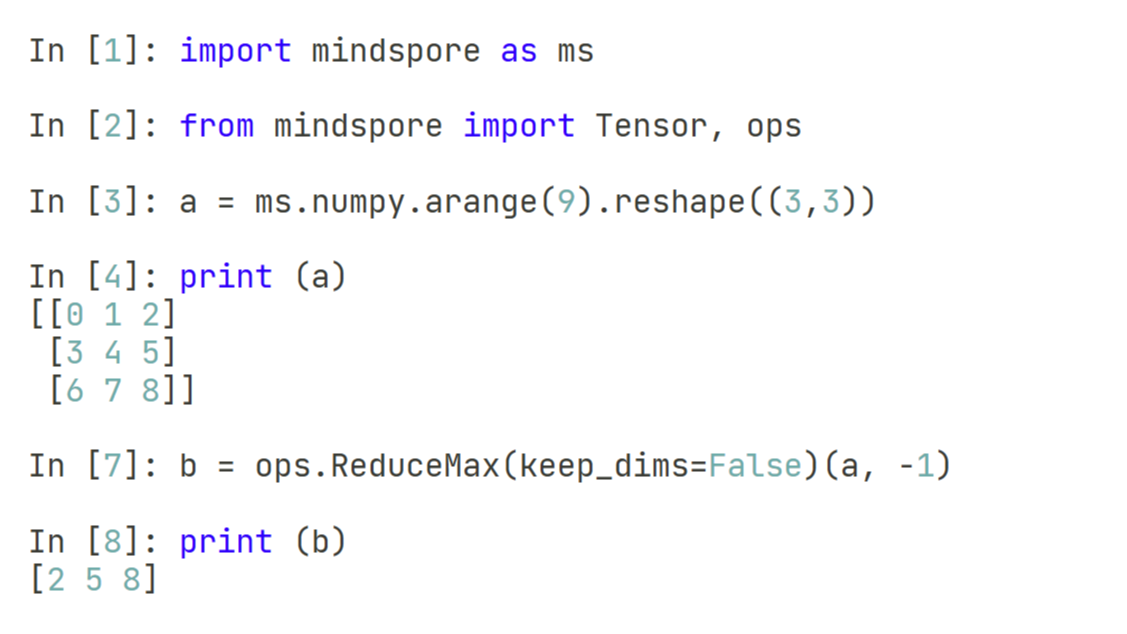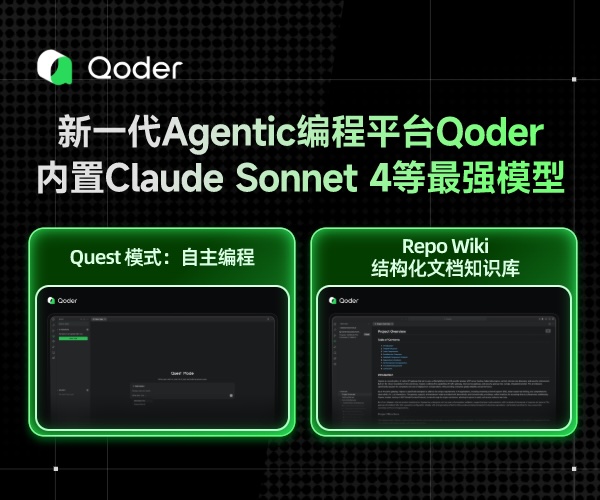MindSpore中的ReduceMax和max操作的区别
问题背景
在原生的Python中,我们使用求最大值max操作,只会得到计算之后的最大值结果。但是在一些深度学习框架中,特别是在多维的场景下,除了得到一系列的最大值之外,还会得到最大值对应的索引。而MindSpore则支持了两种不同的模式(分别依托于两个算子),既可以输出最大值+索引,也可以只输出最大值。
案例演示
首先用PyTorch来演示一下普通的max算子的计算结果:
In [1]: import torch as tc
In [2]: a = tc.arange(9).reshape((3,3))
In [3]: print (a)
tensor([[0, 1, 2],
[3, 4, 5],
[6, 7, 8]])
In [4]: tc.max(a, -1)
Out[4]:
torch.return_types.max(
values=tensor([2, 5, 8]),
indices=tensor([2, 2, 2]))
得到的是一个像字典一样的数据结构,values就是最大值,indices是最大值所在维度的编号。在pytorch里面,没有找到reduce_max的实现,也就是只有这种输出形式。不过在mindspore中,除了普通的max算子,还支持了一个ReduceMax算子:
In [1]: import mindspore as ms
In [2]: from mindspore import Tensor, ops
In [3]: a = ms.numpy.arange(9).reshape((3,3))
In [4]: print (a)
[[0 1 2]
[3 4 5]
[6 7 8]]
In [7]: b = ops.ReduceMax(keep_dims=False)(a, -1)
In [8]: print (b)
[2 5 8]
In [9]: c = ops.max(a, -1)
In [10]: c
Out[10]:
(Tensor(shape=[3], dtype=Int32, value= [2, 5, 8]),
Tensor(shape=[3], dtype=Int32, value= [2, 2, 2]))
这个ReduceMax算子,可以只输出最大值而不输出索引,这在有些情况下可以节约计算空间。
总结概要
本文介绍了在pytorch和mindspore中两种计算张量最大值的算子,如果直接使用max算子,两者的输出都是最大值元素和最大值索引。但是mindspore中额外的支持了ReduceMax算子,可以允许我们只输出最大值而不输出最大值索引。
版权声明
本文首发链接为:https://www.cnblogs.com/dechinphy/p/reduce_max.html
作者ID:DechinPhy
更多原著文章:https://www.cnblogs.com/dechinphy/
请博主喝咖啡:https://www.cnblogs.com/dechinphy/gallery/image/379634.html


 本文介绍了在pytorch和mindspore中两种计算张量最大值的算子,如果直接使用max算子,两者的输出都是最大值元素和最大值索引。但是mindspore中额外的支持了ReduceMax算子,可以允许我们只输出最大值而不输出最大值索引。
本文介绍了在pytorch和mindspore中两种计算张量最大值的算子,如果直接使用max算子,两者的输出都是最大值元素和最大值索引。但是mindspore中额外的支持了ReduceMax算子,可以允许我们只输出最大值而不输出最大值索引。


 浙公网安备 33010602011771号
浙公网安备 33010602011771号